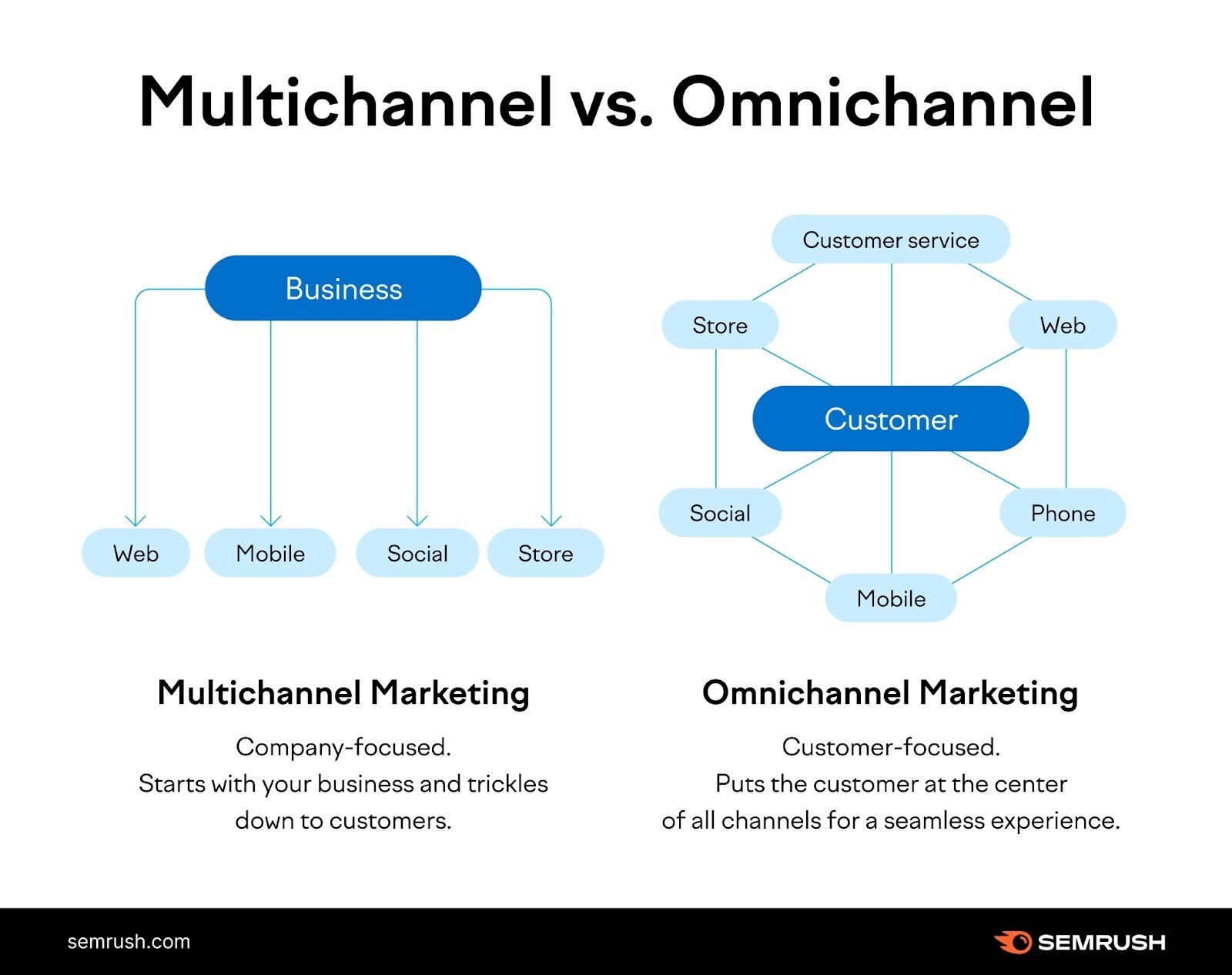As Shakespeare famously said, “All the world’s a stage, and all the men and women merely players. They have their exits and their entrances; and one man in his time plays many parts." Content creators play many parts on the road to success. Just as an actor can get typecasted, only offered similar roles based on one they found success in, creators can also feel pigeonholed into creating the same type of content to keep their audience happy.
Even if you have a personal branding strategy that’s working well for you, you might consider expanding your brand through diversification. In this article, we’ll walk you through how to expand your brand's reach, mitigate risks, and maximize opportunities for growth through personal brand diversification.
What is personal brand diversification?
Personal brand diversification is the intentional expansion of your brand identity across different content types, platforms, revenue streams, or audience segments, without abandoning your core values or expertise.
It's how creators avoid being typecast, stay creatively fulfilled, and build resilience in their business. Done right, diversification helps you grow your reach, reduce over-dependence on one platform or format, and create multiple paths to success.
What is brand diversification?
As its name suggests, brand diversification is a way to diversify your brand. This can be through expanding your content, offerings, and revenue streams. There are many different reasons you might consider diversifying your personal brand, for instance creative freedom, to increase your income, and more.
What makes a good personal brand diversification strategy?
Before you set out in uncharted territory, remain anchored to your personal branding strategy (assuming it’s already working for you). You want to make sure the directions you’re expanding in feel authentic and that you’re not just chasing what others are doing.
Another important brand diversification strategy consideration is why you’re branching out. What is your intention? Is it to reach a new audience? Is it more creative freedom? Is it to earn more revenue? Get really clear about where you’re going, so you don’t stray too far off course.
Next, be considerate about how to mitigate risk. You don’t want to lose your existing audience. That said, you also don’t want to be too attached to them or what seems to be working, as preferences can be swayed based on what’s trending. This is a balancing act; on the one hand, don’t go chasing trends so much that you’re abandoning yourself, but also don’t be so afraid to take risks that you never try anything new.
Expand your content offerings by exploring new formats
One way to diversify is to consider different formants for sharing your content.
For instance, if you have a podcast, you can start video recording episodes to give listeners a new way to tune in—and perhaps reach people who prefer video content to strictly audio content. If you’re a seasoned video editor, consider offering something live, rather than an edited, packaged up version.
When considering which directions to expand in, consider what is a natural extension of what you’re already doing. This isn’t to say that you can’t swing the pendulum in a completely different direction, but starting small can help you test the waters of your new content without abandoning what’s already working.
Diversify your income streams
Once you’ve tested the waters of potential new formats of content, you might start considering ways to diversify your income streams. For instance, if you’re a skilled writer or photographer, and your bread and butter is selling your work, perhaps consider an online course to teach people what you know.
Take a look at what’s working, as well as where you might want to grow. As you weigh your options, be realistic about what feels manageable: what is something you can easily implement, and what are some of the bigger goals that will take some time and planning before you can execute? Are there projects you can create that offer a return on your investment, perhaps by helping you generate passive income?

Explore new platforms
When considering new platforms to share your content, it’s important to keep your strengths and skills in mind. Meanwhile, different platforms come with different opportunities for monetization, such as ads, sponsorships, etc.
If you’re an avid TikTok content creator, for instance, consider sharing your videos on Facebook, Instagram, and/or YouTube to reach new audiences and potentially new revenue streams. What’s nice about this example is you’re repurposing existing content you’ve already created.
In addition to classic social media channels, consider niche platforms that support the work you do. In the example of the writer, mentioned above, you might start self-publishing on Substack, which your audience can read for free or a recurring fee (monthly or annually). Patreon is also a great platform for creators to accept support.
Another important thing to keep in mind is the kind of experience your audience is having. For multi-channel marketing, they will have a different experience on different platforms your personal brand is on. Your brand is the focus. Omnichannel marketing, on the other hand, offers a more cohesive experience that centers the customer. While there is no right or wrong strategy, it is a good idea to consider what kind of experience you want your audience to have.
Collaborate with others
Another simple way to get yourself in front of new audiences is to collaborate with others. Identify partnerships that feel aligned not only with your personal brand strategy but also areas you want to venture into. While it might feel tempting to collaborate with any potential partnership that comes along, stay true to your brand and audience. Seek partnerships that are in integrity with your brand and values.
Build your email list; create a newsletter
One simple way to diversify your personal brand is to build your email list. If you’re not already tapped into email marketing, it is essential to your brand and business. For starters, you don’t have any control over your followers on social media. You could lose them at any time if there is a shift. Plus, algorithms that determine what content is prioritized are constantly changing.
If your content is primarily on one social channel, start introducing ways to engage off the platform by inviting your audience to receive your newsletter. They might need a little encouragement (i.e. with an enticing incentive). Get creative about capturing their contact information, so you can not only connect in a different way (and therefore reach potential customers) but also so you can remain connected outside of unpredictable social media channels.
Invest in your personal brand
Before branching out, invest in your personal brand, so that systems can run smoothly as you explore additional avenues. Investment doesn’t have to mean financial; investing can also be in your time and energy.
In addition to monetary, investments can be in your time and energy. Financial investments might include content creation tools, trainings, and money budgeted for running ads on your content, while investing in your time and energy might look like content planning and reviewing performance of past posts through analytics.
Engage with your audience
We already know engaging with your audience is important when it comes to social media algorithms, and it’s also a good strategy to stay connected with the people already invested in your content. Your audience is a great resource to tap. Test out new ideas by asking for feedback. This can also help create and enhance a sense of community as that human touch can build and strengthen relationships.
Build an authentic community
Engaging with your existing audience can lead to a genuine community. When engaging with them, try connecting in an authentic and vulnerable way. Let yourself be seen and heard, and in turn, when they engage, let them know you see and hear them. This can be by encouraging communication, acknowledging and celebrating them, and holding space for whatever their experience is. The key is to center your audience and offer content that can truly support them. Be patient with growing a community. Prioritize quality over quantity, when it comes to your content, and nurture authentic connections.
Leverage user-generated content (UGC)
User-generated content (UGC) is content that is created by your customers, people that have tried your products and are willing to share their experience. While videos are increasingly popular in the world of Instagram marketing, photos, testimonials, reviews, and comments are also beneficial.
UGC is a form of social proof, helping you build trust among your audience. It can also help widen your reach by introducing your offerings to the user’s network, boost engagement, and create community. When it comes to personal brand diversification, you might partner with micro-influencers to help you launch and build hype around a new offering.
Common diversification mistakes (and how to avoid them)
As we’ve already mentioned, straying too far from your personal brand can be a common pitfall. In addition to neglecting your original content, don’t neglect your existing audience in pursuit of a new one.
Another potential trap to avoid falling into is spreading yourself too thin because you’ve taken on too much or are trying to do everything. Remember what works for you, and don’t get distracted by what everyone else is doing. At the same time, if you are trying something new, don’t give up too easily, as it can take some time to see the fruits of your labor.
Additional examples of personal brand diversification
1. Wellness coach expands beyond Instagram
Original Brand: Daily wellness tips and short-form mindset videos on Instagram
Diversified Brand Moves:
- Launches a Teachable course on stress management techniques
- Starts a podcast interviewing experts on holistic health
- Offers a subscription-based journal template
Why It Works: They're expanding formats and income streams without straying from their core topic: wellness.
2. A career strategist adds a creative pivot
Original Brand: Resume tips and job search strategies on LinkedIn
Diversified Brand Moves:
- Writes a Substack newsletter exploring career fulfillment and burnout recovery
- Hosts monthly live coaching sessions for mid-career professionals (on Teachable of course)
- Experiments with short, humorous “day in the life of a job seeker” content on TikTok
Why It Works: Still career-focused, but now speaks to emotional and creative needs, plus, new platforms = new audiences.
3. A niche YouTuber broadens their topic range
Original Brand: Tutorials for a specific productivity app (e.g., Notion)
Diversified Brand Moves:
- Launches a digital product bundle for creators and freelancers (e.g., content calendars, CRM templates)
- Starts sharing weekly “behind-the-scenes” creator business tips via email
- Opens a Teachable mini course on how to build a digital template business
Why It Works: Still about productivity, but now includes business insights and monetization education.
4. A personal finance creator leans Into ilfestyle
Original Brand: Budgeting tips and debt payoff journey on YouTube
Diversified Brand Moves:
- Builds a podcast about financial literacy and mindset with guests from different backgrounds
- Introduces sustainable living and minimalist lifestyle content on Instagram
- Sells digital downloads like budgeting spreadsheets and meal planners
Why It Works: Expands the brand from “finance expert” to “intentional living guide,” opening up lifestyle sponsorships and wider appeal.
The bottom line on personal brand diversification
Stay true to your values
Again, personal brand diversification isn’t about abandoning your core audience, offerings, or strengths. Rather, complement your already-established personal brand with opportunities to enhance what’s already working.
Consider your personal brand strategy your foundation. Diversification is a way to continue building while keeping the integrity of your brand intact.
Join more than 150,000 creators who use Teachable to make a real impact and earn a real income.


